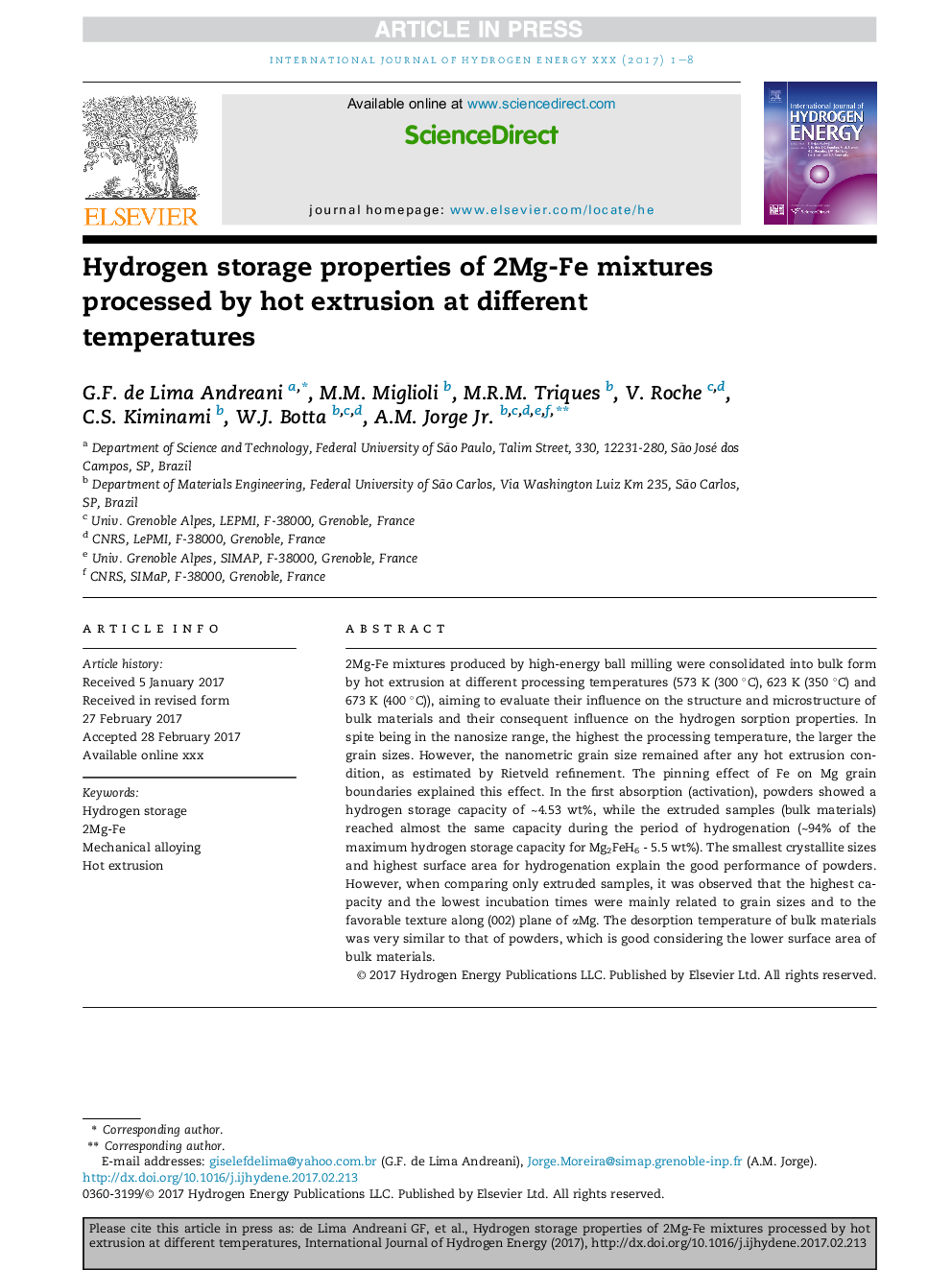| Article ID | Journal | Published Year | Pages | File Type |
|---|---|---|---|---|
| 5145752 | International Journal of Hydrogen Energy | 2017 | 8 Pages |
Abstract
2Mg-Fe mixtures produced by high-energy ball milling were consolidated into bulk form by hot extrusion at different processing temperatures (573 K (300 °C), 623 K (350 °C) and 673 K (400 °C)), aiming to evaluate their influence on the structure and microstructure of bulk materials and their consequent influence on the hydrogen sorption properties. In spite being in the nanosize range, the highest the processing temperature, the larger the grain sizes. However, the nanometric grain size remained after any hot extrusion condition, as estimated by Rietveld refinement. The pinning effect of Fe on Mg grain boundaries explained this effect. In the first absorption (activation), powders showed a hydrogen storage capacity of â¼4.53 wt%, while the extruded samples (bulk materials) reached almost the same capacity during the period of hydrogenation (â¼94% of the maximum hydrogen storage capacity for Mg2FeH6 - 5.5 wt%). The smallest crystallite sizes and highest surface area for hydrogenation explain the good performance of powders. However, when comparing only extruded samples, it was observed that the highest capacity and the lowest incubation times were mainly related to grain sizes and to the favorable texture along (002) plane of αMg. The desorption temperature of bulk materials was very similar to that of powders, which is good considering the lower surface area of bulk materials.
Related Topics
Physical Sciences and Engineering
Chemistry
Electrochemistry
Authors
G.F. de Lima Andreani, M.M. Miglioli, M.R.M. Triques, V. Roche, C.S. Kiminami, W.J. Botta, A.M. Jr.,
